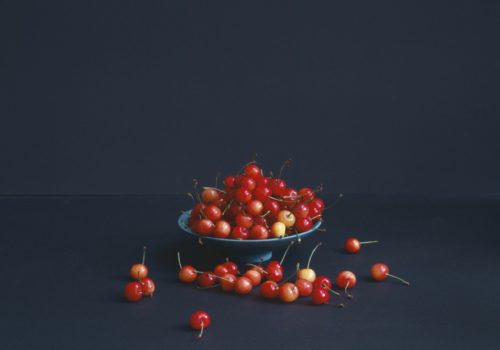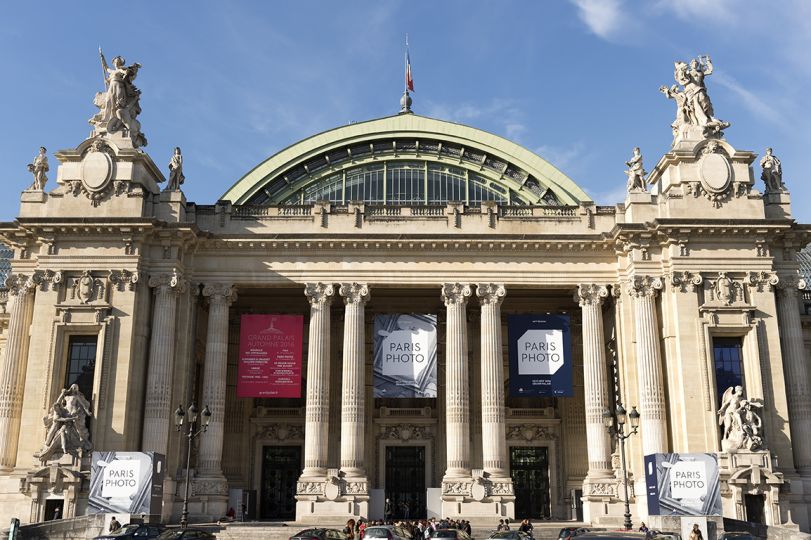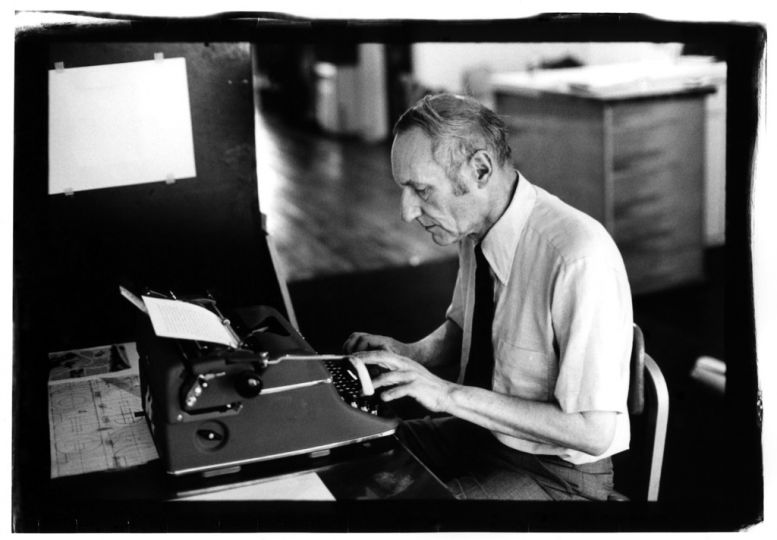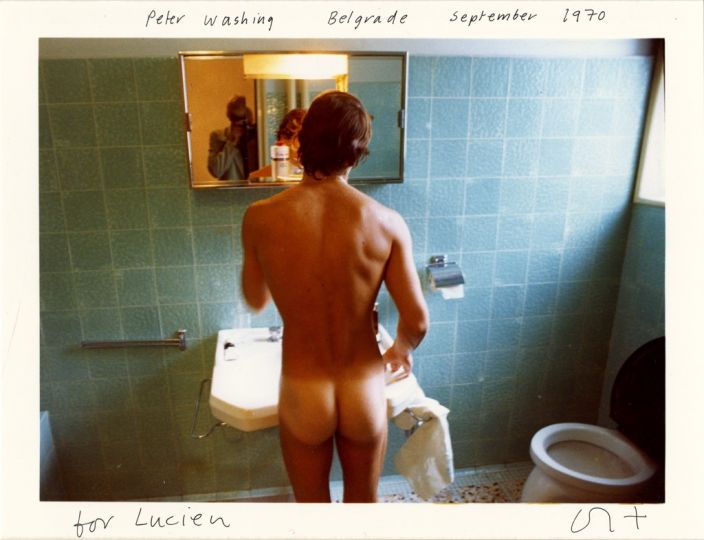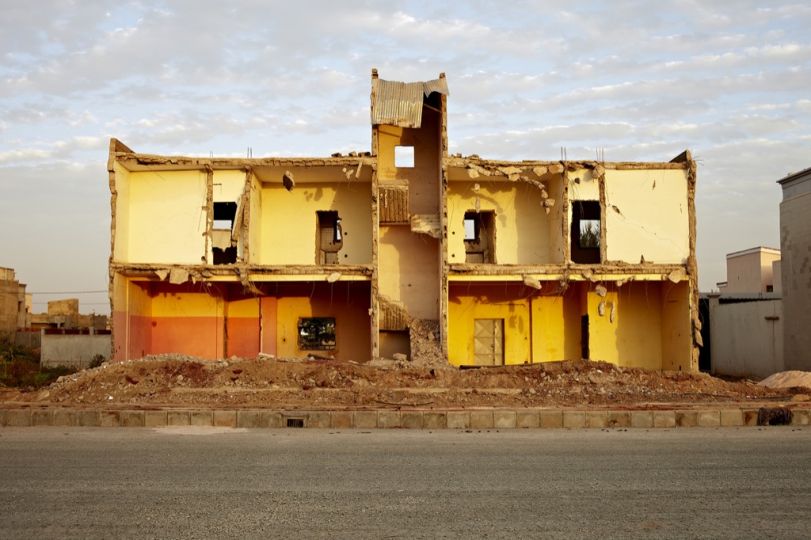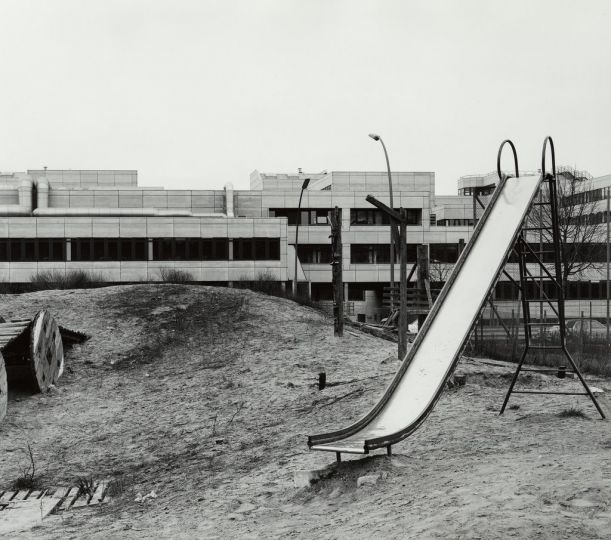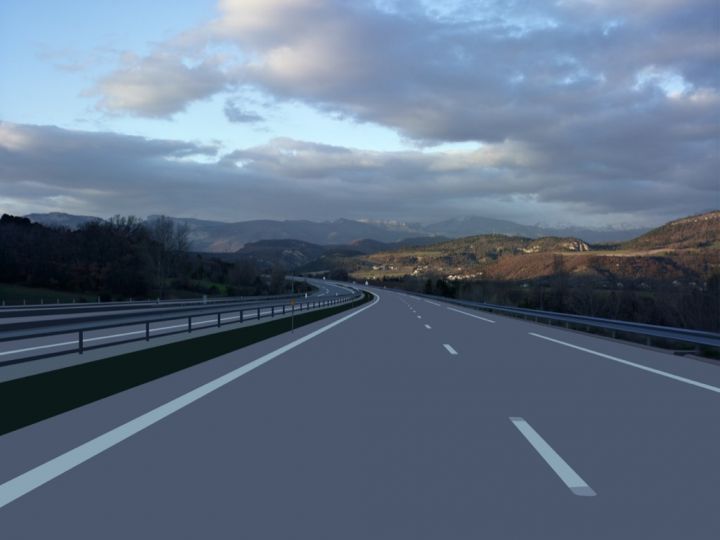Shoji Ueda is a major artist in Japanese photography, whose œuvre soon had an international stir. His compositions, inventive and charming, are aside from history of photography, far from artistic movements and tendencies, pure products of his playful spirit and his fertile imagination. In the close to his heart dunes of his native region of Tottori, but also in the streets of his village or at home, guided by his unique vision and his insatiable curiosity, he always creates images of a striking aesthetic, dreamlike and full of benevolent humor.
Alongside his family, kids of surrounding schools, professional models during the 1980’s, all posing for him, he orchestrates surprising com- positions, both graphical and highly poetic. The model in itself matters less than the silhouette, the contrast, the construction of the image, the incongruousness of objects and bodies. Likewise, within his studio, inside a little box, he arranges and coordinates his objects; wood sticks and seashells picked up on the beach, objects of the everyday life, or fruits. To these, as well as to the portraits of his relatives and to the fashion photographs, he lends the same “surreal touch”, generating poetry within daily details, at the margins of the documentary tendency of his Japanese contemporaries. In his photographs even the objects acquire something human and comic, like characters he integrates to his world, looking at the viewer with sweet irony.
Indeed, a great part of Shoji Ueda’s oeuvre is characterized by his assumed originality beside the tendencies and artistic movements of his time. Isolated in his native region, he is cut from Tokyo’s agencies and from the production of great artistic centers in and out Japan, having an access to photography magazines quite rarely – notably one exemplary of the Swiss “Modern Photography” in the beginning of his career, inducing a short running interest for surrealism avant-garde in his work. He then produced atypical images, in this area called San’in (in the mountain’s shadow) – in the shadow of Tokyo. The peculiar atmosphere of the San’in, with its seashore light, its cloudy and melancholic skies, is Ueda’s backdrop, from which he likes to draw subtle and bright greys, impregnating his photographs with this ambiance. Beside his treatment of light one cannot, obviously, override the dune, immense stretch of sand which seems luminescent from reflecting the brightness of the sky, and used by Ueda as the immaculate canvas receiving the projections of his imagination. “The dune is a naturally photographic landscape. Nature reduced to a plain background. Frankly, I don’t think a photographer could dream of something better than a dune.” These dunes he used as his studio enabled him to simplify the background as much as possible, bringing the subject out, in a precise aesthetic based on bareness. The very peculiar light thus draws some very sharp outlines, which concentrate the gaze on what is essential.
Through his evocative photographs, of sober refinement, he endeavors to show what the eye doesn’t normally see; “Photography is for me an art of representation in every sense of the word. My touch is to intervene and conceive on the spot my personal universe. To show things as they appear to most of the people is not interesting to me anymore. I leave the documentary world for them, and what matters to me is to try to suggest them that one can see differently.” He thus adapts reality, in a desire to assume the theatrical characteristics of photography, which is always a setting of reality in the lens. “I like when we feel a slight intervention of the photographer in the images.” His very sincere view creates an accomplice dialogue with the world; his models of great presence challenge the viewer, with an assumed gaze to the camera. To the theatre of objects must be added a puppet theatre in the dunes. Capturing the simple essence of the gesture, his oeuvre creates an essential harmony between the elements, and strives to express a suspended time made of quiet “silent memories’. He successfully builds a quirky universe foiling our visual conventions, a very personal poetry of the everyday life, a questioning about time, by distancing the subject and making it timeless, and a soothing universality of humor and tenderness. But he kept a refreshing humility, and did not consider himself as a professional photographer but a “serious photographer”.
This claim of this amateur status – notably alongside amateur clubs of photography – also dispensed him with explanations and manifests, giving him a complete freedom of tone, but without tarnishing what he considers a daily passion which is all of his life and in which he defines all his life. Soon the owner of a photographic material shop, this banal exterior hides in fact a spirit of incomparable inventiveness and freedom. In his unique world, made of fantasy, of a sharp sense of observation, of a certain formal rigor, he deploys a tender humanism, a unique sense of communication – which enables him to connect with the numerous children he photographed, and a generous empathy with the world and the models he draws from it. This sensitivity, together with a refined and synthetic vision, lend to his work an always renewed freshness, his eyes being just like those of a child, inventing a world by transcending the fragments of the most innocuous everyday life.
Shoji Ueda was born in 1913 in Sakaiminato, in the south-west of Japan. Very young, he thinks of becoming a painter, and at fifteen years-old his father offers him his first camera. At eighteen years old he already belong to groups of amateur photographers, and in 1932 he graduated from the Tokyo Oriental Photography School. Until his disappearing in 2000, he dedicated his life to photography in his native region, far from Tokyo’s profusion, in an aesthete spirit which claims his amateurism. However, Shoji Ueda has been internationally praised as one of the leading Japanese photographer, to whom a museum has even been dedicated in 1995, the Shoji Ueda Shashin Bijutsukan (Shoji Ueda Museum of Photography).
Shoji Ueda – SAGE Paris, Booth C30
At Paris Photo 2016
November 10 to 13, 2016
Grand Palais
Paris, France

